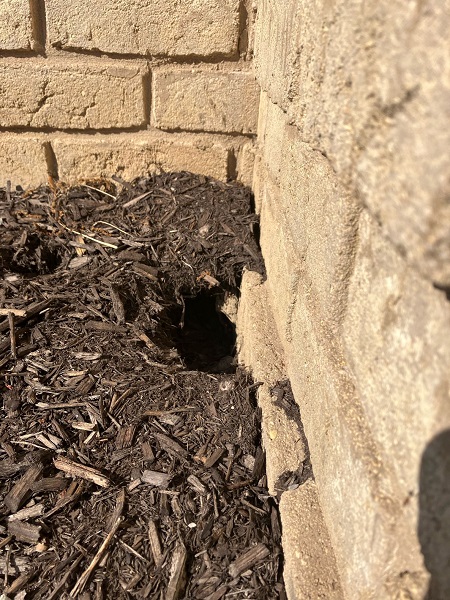
However, it’s important to note that groundhogs can still be problematic throughout the year, as they are active animals that continue to excavate burrows and feed on plants. While their activity may decrease during summer and fall, they can still cause damage to lawns and gardens during these seasons.
One of the main issues with groundhogs in Indianapolis is their ability to dig burrows and create large holes in the ground. These holes can be a safety hazard, especially when they are hidden by tall grass or vegetation, potentially causing accidents or injuries to people and animals. Additionally, groundhog burrows can destabilize the soil, leading to erosion and potential damage to the structural integrity of structures like buildings and fences.
Photos of Groundhog Damage in Indianapolis


Groundhog Control in Indianapolis
Live Traps
Sometimes, live trapping and relocation might be the only option. Place the traps in front of burrow entrances or in your garden. Bait them with apple slices, carrots, lettuce, sweet corn, or broccoli, then work the bottom of the trap into the earth. Check the groundhog trap often so the groundhog won’t get overly stressed out if it is captured. If you trap a groundhog, cover the trap with an old blanket while transporting it, so it doesn’t get stressed out. For release, drive at least 3 miles away from your house so it doesn’t find its way back.
Fumigation
This method should be a last resort. Fumigation entails buying a gas cartridge, igniting it, and placing it into the groundhog’s burrow, at which point the groundhog will be eliminated. Be sure to follow the instructions on the product’s label exactly, as these products are toxic. Also, it’s important to be sure that the groundhog is “home” when you actually carry out the fumigation. The best time to fumigate is the time between March and September, on cool, rainy days when the groundhog is not active.
Groundhogs can wreak a whole lot of havoc in your yard, and potentially even burrow under your house, which can cause a whole host of problems. As such, it’s important to deal with them promptly. While you might be able to handle the issue on your own, groundhogs can be aggressive and carry rabies, so we highly recommend contacting Critter Control to assess and address the situation.

Photos and insights provide by Hannah Fisher, wildlife sales consultant.